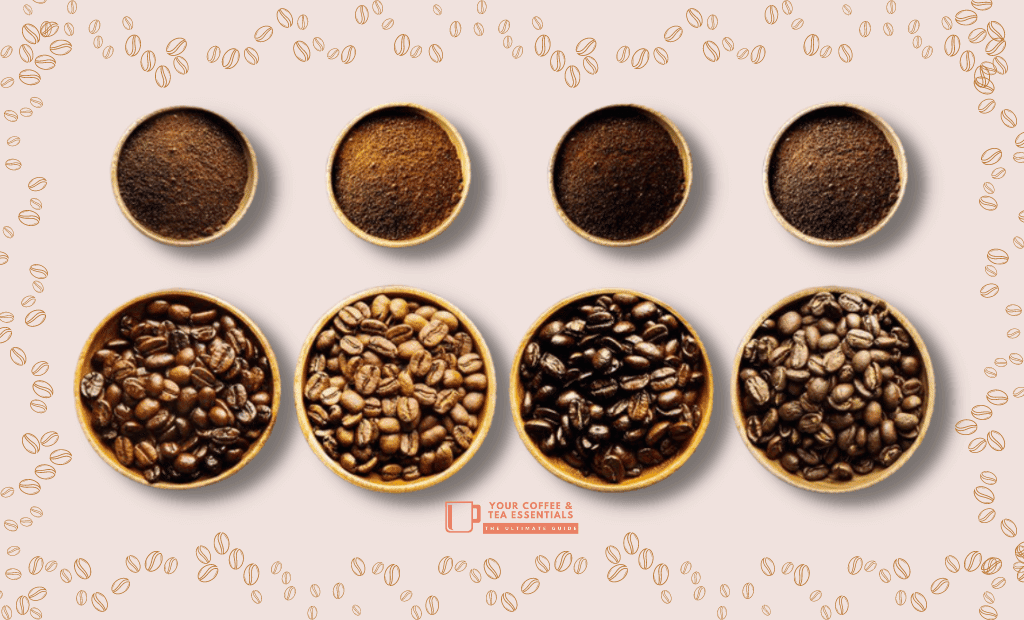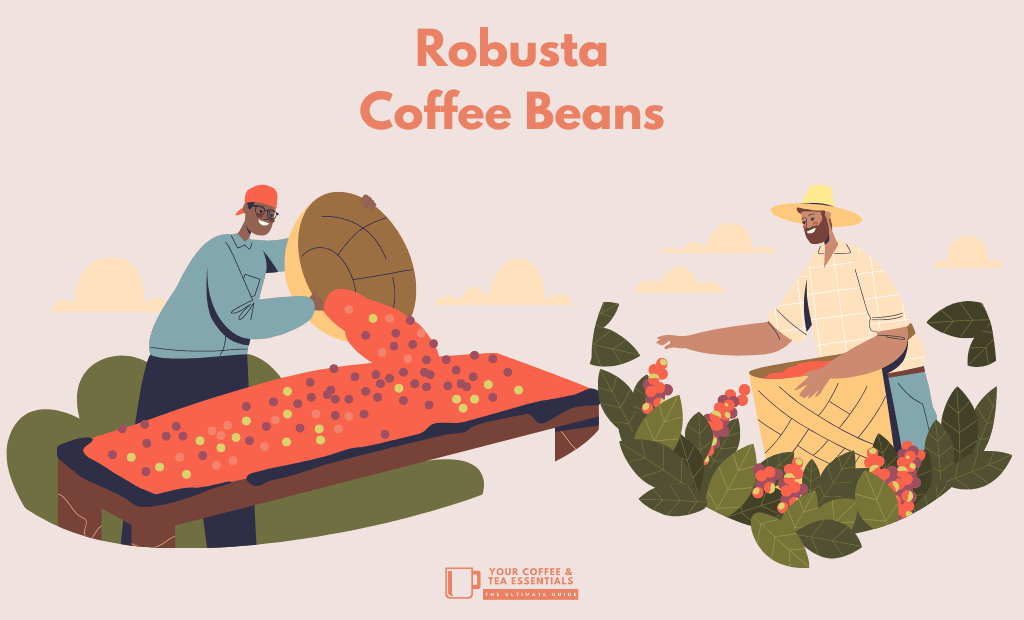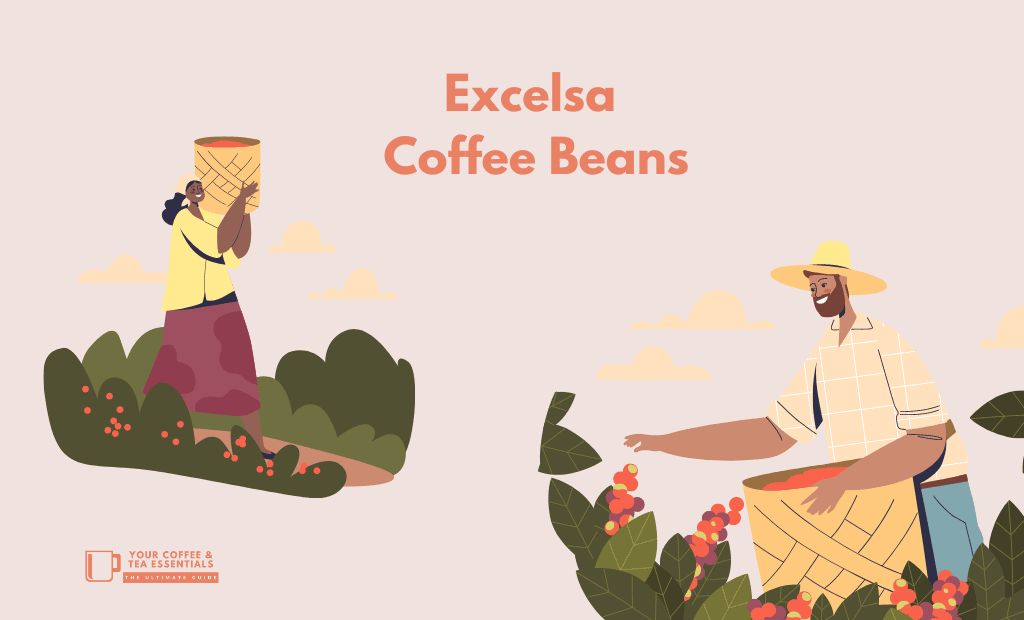The 4 Types of Coffee Beans: A Quick Beginner's Guide

Coffee drinkers love their coffee and often can't get enough of it. That said, most coffee enthusiasts may be experts at drinking coffee but not at identifying the kind of beans that make it into their cup of joe.
Let's look at the 4 main types of coffee beans out there. We'll get into how they taste, where they come from, and more! Plus we’ll throw in a quick guide on what you should look out for when choosing coffee beans.
The 4 Main Different Types of Coffee Beans
The world's coffee production centers on the "Bean Belt," countries that produce the most popular beans on the planet.
These types of coffee beans all come from the coffee plant, which belongs to the genus Coffea. The coffee beans are actually the seeds of the coffee cherry (i.e. the coffee plant’s fruit).
While we don't work with the coffee cherry, the beans are roasted, becoming the single-origin coffees we all enjoy.
The different types of coffee beans are simply the seeds of different species of coffee plants. Even within the same species, there are varieties and cultivars which can result in wildly different flavors and aromas.
Let's go through their differences and their identifying features below:
Arabica Coffee Beans (Coffea arabica)
Arabica beans are the most common type of seeds grown worldwide and may be the first consumed by humans. They account for around 60% of the world’s coffee production. While Ethiopia is believed to be the birthplace of the Arabica coffee bean, it is now mainly produced in Latin America, East Africa, and, to a smaller extent, Asia. Arabica grows at high altitudes and is better served hot than served cold.
The Arabica plant was almost wiped out in the 1800s due to the coffee rust disease, first identified in Sri Lanka and Java. This led to the rise of Liberica beans. However, Arabica trees recovered and now grow in over 30 countries.

While the exact number is unknown, there are dozens of different varieties or cultivars of C. arabica. The most commonly produced are Bourbon and Typica.
Arabica has taken its place in the industry thanks to its smooth taste without much bitterness. Arabica can develop different notes and hints depending on where it's grown.
It is widely available commercially and can be found in gourmet and normal products. It is also found in blends with Robusta seeds.
Robusta Coffee Beans (Coffea canephora)
Robusta coffee is the second-most popular type in the world, accounting for around 40% of the world’s coffee production (second only to Arabica beans). Good-quality Robusta coffee beans have almost double the amount of caffeine as Arabica beans.
Native to central and western sub-saharan Aftrica, the Robusta coffee bean is nowadays mainly grown in Southeast Asia, Brazil and East Africa. Robusta can be produced more cheaply than Arabica, and is domestically consumed in Asian countries and Brazil. European espresso lovers, on the other hand, love high-quality Robusta for its added crema and caffeine content. Robusta plants prefer a hot climate and can dwarf Arabica plants when fully grown.

Robusta beans have a bitter taste, making them ideal in coffee blends that can make them tastier while neutralizing the negatives of the Robusta bean.
A considerable advantage of Robusta coffee plants is that they are much more resistant to pests and other stress-factors. The high caffeine content functions as a chemical defense, keeping off bugs. Compared to the Arabica plant, the Robusta is also much more resilient against heat and direct sun exposure.
This makes them easier to find commercially. You can also find them as single-origin products from smaller farmers and producers.
Liberica Coffee Beans (Coffea liberica)
The Liberica coffee bean grew in popularity when Arabica coffee produced "coffee rust," which almost wiped out the species. Making up less than 2% of the world’s coffee production, they are now grown primarily in Southeast Asia.
Liberica coffee comes from the huge Liberica family of plants. They're known for their irregular shape and smoky flavor profile.

This species is known for having a controversial flavor, to say the least. It's been praised for being nutty and woody but also derided for tasting burnt.
It is most commonly found in the Philippines and Malaysia. You're lucky if you find yourself in Southeast Asia or in shops belonging to their diaspora.
Excelsa Coffee Beans (Coffea liberica var. dewevrei)
Excelsa beans are currently classified as a Liberica variant, but they're still considered the fourth type of beans available on the market. It makes up around 6% of the world’s coffee production.
Excelsa is known for its unique flavor, combining light roasts and dark roasts characteristics, like a sharp taste with the fruity flavors found in dark roast beans. They grow in tropical climates at medium altitudes.

This type is harder to find outside of Asia, which is why it's so underrated and underrepresented. If you can find it, make sure to get your hands on a bag. They're worth it.
People Also Search For:
Coffee Bean Types Comparison
We have prepared this handy table so you can see at a glance how the 4 types of coffee beans differ.
| Bean Type | Native to | Cultivated In | Tasting Notes | Caffeine Level | World Production (tons) | World Production (%) |
| Arabica | Ethiopia | Latin America, East Africa, India | Chocolatey, spicy, floral, earthy | 1.2-1.5g / 100g | 720’000 | About 60% |
| Robusta | Sub-saharan Africa | Southeast Asia, Brazil, East Africa | Bitter, rubbery, peanutty | 2.2-2.7g / 100g | 408’000 | About 40% |
| Liberica | Liberia | Southeast Asia | Smokey, chocolatey | 1.2g / 100g | <24’000 | Less than 2% |
| Excelsa | Central Africa | Southeast Asia, India | fruity, woody, chocolatey | 0.8-1.1g / 100g | 72’000 | About 6% |
How to Choose Which of These Main Coffee Bean Types to Buy
When looking to buy your own seeds, it's best to go for 100% Arabica coffee. You could also go for Robusta or a blend of the two if you're looking for more caffeine.
When choosing which types of coffee beans to buy, it's good to consider the origin of your bean. This will help you ensure quality or find cheaper products by looking for a bean grown closer to you.
You should also look into roast color and flavors that come when roasting low and medium-roast beans. You can also opt for coffees with low acidity if your stomach is more sensitive.
Irrespective of the type of beans, you should always look out for the roast date on the packaging. To get the best-tasting coffee, make sure you consume your beans between 7-21 days after roasting. Past that, the quality slowly starts to deteriorate.
Beyond this, you can choose specialty-grade coffee if palate matters more than price. You should also consider whether you like hot or iced coffee and always make sure you buy whole beans and grind them at home.
All these choices will help you find the ideal seeds for the drink you enjoy!
Related:
- The Best Manual Coffee Grinder Reviews
- The Best Automatic Espresso Machine + Other Contenders
- Best DeLonghi Espresso Machine – The Ultimate Buying Guide
- The Best Automatic Pour Over Coffee Maker + Other Contenders
- Here's Why You Must Try Excelsa Coffee Beans Right Now!
Frequently Asked Questions
Coffee lovers who want to learn more about the different whole-bean coffee types from Arabica to Excelsa can rest assured knowing that we have their questions covered.
Let's answer some of the most common questions on the Internet that will help you find the best coffee for your needs.
What Type of Coffee Bean Is the Best?
Arabica beans are the best on the market, completely dominating the industry thanks to their smooth texture, notes, and aromas. No other species compares or even comes close to its popularity and flavor.
How Many Kinds of Coffee Beans Are There?
There are four main types of single-origin beans available, these being the ones we've discussed above. However, within the same species, there are many varieties. Some of the most known arabica varieties include Bourbon and Typica.
While the four main ones are commonly found in coffee shops and your local coffee aisle, there are actually over a hundred coffee plant species found worldwide. However, most of them are not edible and therefore irrelevant to coffee production.
What Is the Most Popular Coffee Bean?
The Arabica bean is undeniably the most popular, making up 60-70% of bean production worldwide, from Costa Rica to Ethiopia.
Robusta beans produce the other 30% of the world's supply. They are produced primarily in Vietnam and Indonesia.
What Is the Tastiest Type of Coffee?
Kona beans produce one of the greatest flavors thanks to the idyllic tropical climate they grow in and the watchful eyes of generations of farmers.
It's extraordinarily rich in terms of taste and flavor. It's painstakingly handpicked, and every step has been taken to ensure that every batch produces the perfect combination of flavors.
Typica is the original Kona variety, known for its chocolatey and floral profile. Nowadays, more varieties such as Bourbon and Geisha are grown, adding exciting new flavors.
What Are the Most Expensive Coffee Beans?
The most expensive coffee beans are Kopi Luwak beans from Indonesia, which are digested and processed by Asian palm civet cats. They can consist of any type of bean, depending on the Civets’ preferences.
Once the processed beans come out the other end, they are collected by humans. Although some praise the taste as pure and smooth, coffee experts came to the conclusion that it’s simply bad.
Final Words
We've gone through the different types of coffee beans available, namely: Arabica beans, Robusta beans, Liberica beans, and Excelsa beans.
While Arabica and Robusta may be the most popular when buying coffee beans, your choice of which coffee bean to get will depend on your preferences involving flavor, the roasting process, and more.